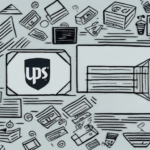How to Optimize Your Ecommerce Shipping Process for Maximum Efficiency
As an ecommerce business, efficient shipping is not just important—it's critical to your success. Shipping often serves as the final touchpoint with your customers and can significantly influence their experience with your brand. An optimized shipping process enhances customer satisfaction and positively impacts your bottom line. This article explores various strategies to optimize your ecommerce shipping process for maximum efficiency.
The Importance of Efficient Ecommerce Shipping
Efficient ecommerce shipping is crucial for several reasons:
- Customer Satisfaction: Prompt and timely delivery leads to happy customers who are more likely to return and make repeat purchases.
- Brand Trust: A reliable shipping experience builds trust in your brand and encourages positive word-of-mouth, attracting more business.
- Cost Efficiency: An optimized shipping process reduces overhead costs, allowing you to offer competitive pricing without compromising quality.
Given these benefits, it's essential to continually evaluate and improve your shipping process to maintain a competitive edge.
Analyzing and Identifying Bottlenecks in Your Shipping Process
Assessing Your Current Shipping Workflow
The first step in optimization is a thorough assessment of your current shipping process. Review each stage, from order receipt to delivery, to identify inefficiencies. Documenting this workflow helps pinpoint areas that may require improvement.
Identifying Common Bottlenecks
Common bottlenecks in ecommerce shipping include:
- Delays in order processing
- Inventory management issues
- Slow order picking and packing
- Shipping carrier delays
- Inaccurate data entry leading to order errors
By tracking the time each step takes, either manually or using specialized software, you can identify which stages are causing delays and focus your efforts on improving them.
Gathering Customer Feedback
Customer feedback is invaluable for identifying bottlenecks. Consistent complaints about slow delivery times or damaged packages indicate areas that need attention. Engaging with customers to understand their pain points can guide your optimization efforts.
Streamlining and Optimizing Order Fulfillment
Enhancing Inventory Management
Effective inventory management is key to streamlined order fulfillment. Utilize online inventory management systems to track stock levels, forecast demand, and manage replenishments. This reduces the risk of stockouts and ensures timely order processing.
Improving Packing Processes
Ensure that packing supplies are readily available and that packing slips or invoices are prepared in advance. Implementing automation tools or integrating with third-party logistics providers can simplify and speed up the packing process.
Optimizing Shipping Strategies
Consider using multiple shipping carriers to offer the best rates and delivery times to your customers. Tools like ShipStation can help compare rates and select the most efficient carrier for each order.
Leveraging Technology to Automate Shipping
Implementing Shipping Software
Shipping software automates various aspects of the shipping process, such as label printing, rate calculations, and order tracking. Solutions like Shippo integrate with popular ecommerce platforms like Shopify, WooCommerce, and Magento, streamlining operations and reducing manual errors.
Automating Order Tracking and Notifications
Automated tracking and delivery notifications keep customers informed about their orders in real-time. This transparency enhances the customer experience and reduces the likelihood of inquiries about order status.
Integrating with Inventory Systems
Integrating shipping software with inventory management systems provides real-time visibility into stock levels, helping prevent stockouts and ensuring accurate order fulfillment.
Reducing Shipping Costs Without Compromising Quality
Negotiating with Shipping Carriers
Negotiate better rates with shipping carriers based on your shipment volume and frequency. Building strong relationships with carriers can lead to more favorable pricing and service agreements.
Offering Free Shipping Strategically
Offer free shipping on orders over a certain value to encourage larger purchases. This can increase average order value while managing shipping costs effectively.
Optimizing Packaging
Use the smallest and lightest packaging possible without compromising product protection. This reduces shipping costs and minimizes environmental impact. Consider eco-friendly materials to appeal to environmentally conscious customers.
Utilizing Fulfillment Centers
Fulfillment centers can handle storage and shipping at a lower cost compared to in-house operations. They also provide scalability, allowing you to manage peak periods more efficiently.
Enhancing Customer Experience Through Accurate Estimates and Efficient Returns
Providing Accurate Delivery Estimates
Accurate delivery estimates are essential for customer satisfaction. Base your estimates on reliable carrier data from your warehouse location to the customer's address. Tools like AfterShip can help provide precise delivery timelines.
Efficient Returns and Exchanges
Streamline your returns process by implementing clear return policies and using shipping software that integrates with returns management. This ensures that returns are processed quickly and accurately, maintaining customer trust and satisfaction.
Implementing Best Packaging Practices for Safe Delivery
Choosing the Right Packaging Materials
Select packaging materials that provide adequate protection while keeping shipping costs low. High-quality packaging supplies like bubble wrap or packing peanuts can prevent damage during transit.
Eco-Friendly Packaging Options
Opt for environmentally friendly packaging materials to reduce your carbon footprint and appeal to eco-conscious consumers. Materials such as recyclable boxes and biodegradable fillers are excellent choices.
Proper Labeling and Handling Instructions
Ensure that all packages are labeled correctly with handling instructions to prevent damage during shipping. Clear labeling helps carriers handle packages appropriately, reducing the risk of delays or mishandling.
Utilizing Data for Informed Shipping Decisions
Analyzing Shipping Data
Regularly analyze your shipping data to identify patterns and trends. Metrics such as delivery times, shipping costs, and customer satisfaction can provide insights into areas for improvement.
Forecasting Demand and Managing Inventory
Use data-driven forecasts to manage inventory levels effectively. Accurate demand forecasting helps prevent stockouts and ensures that you can meet customer orders promptly.
Optimizing Shipping Strategies Based on Data
Leverage shipping data to optimize carrier selection, shipping rates, and delivery options. Data insights enable you to make informed decisions that enhance efficiency and reduce costs.
Training Staff and Measuring Shipping Performance
Staff Training on Shipping Processes
Ensure that your team is well-trained on shipping processes and procedures. Regular training reduces errors, maintains quality standards, and ensures consistent customer experiences.
Setting Key Performance Indicators (KPIs)
Establish KPIs such as delivery times, shipping costs, and customer satisfaction rates to measure shipping performance. Tracking these metrics helps assess the effectiveness of your shipping strategies.
Continuous Performance Evaluation
Regularly evaluate your shipping performance against your KPIs. Use the insights gained to adjust strategies and continuously improve your shipping process.
Ensuring Customer Satisfaction in Ecommerce Shipping
The ultimate goal of optimizing your ecommerce shipping process is to deliver an outstanding customer experience. A positive shipping experience fosters brand loyalty and generates repeat business. By leveraging technology, data, and best practices, you can ensure timely and secure deliveries, handle returns efficiently, and maintain high levels of customer satisfaction.
Optimizing your shipping process is an ongoing effort that requires continuous attention. Start by analyzing your current processes, identifying and addressing bottlenecks, and implementing streamlined fulfillment practices. Leverage technology to automate tasks, reduce costs, and enhance the customer experience. Focus on best packaging practices, utilize data for informed decision-making, and ensure your team is well-trained and performance is regularly measured. By following these steps, you can achieve maximum efficiency and success in your ecommerce shipping operations.






















